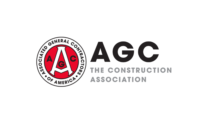A proposed new U.S. Dept. of Labor regulation that would reshape apprenticeship programs across a wide range of industries has drawn sharply divided reactions from construction industry groups, with unions praising the plan, a major contractor group strongly criticizing it, and other contractor associations with relationships with unions also welcoming the proposed rule.
The key construction provision in the proposed rule, which Labor released on June 24, would exempt the industry from taking part in so-called Industry-Recognized Apprenticeship Programs (IRAPs), "at least initially," DOL says. [View text of proposed regulation here.]
The building trades unions welcomed that exemption and want to see it made permanent. But the Associated General Contractors of America and Associated Builders and Contractors want to see construction included in the program.
Proponents and opponents of the regulation will be able to weigh in with formal comments to DOL. The deadline for those submissions is Aug. 26. DOL will review those statements as it works on a final version of the rule, which is expected to take months for officials to write.
DOL says that its proposal takes a "industry-led, market-driven approach." It would allow industry groups, associations, educational institutions, states and localities, unions and other organizations to apply to DOL to become Standards Recognition Entities (SREs).
Those entities would set benchmarks for training and curricula for IRAPs in individual industries or business sectors. The SREs would be subject to DOL oversight.
That would be a shift from the long-standing current system, in which DOL registers individual apprentices and apprenticeship programs directly or via state agencies.
One goal of the Trump administration in drafting the regulation is to increase the use of apprenticeship programs in a variety of industries, particularly those where apprenticeship participation is thin.
In its proposal, DOL said that based on the number of current apprentices, it would designate construction and the U.S. military as sectors “where registered apprenticeship opportunities are already significant.” And it said that it would not "at least initially" take SRE applicants for construction or the military.
Construction Leads in Apprentice Totals
Construction has the largest number of active apprentices among industries, with 166,629 in fiscal year 2018, according to DOL figures (Note: scroll to end of the linked webpage to see industry-by-industry totals for apprentices). The military ranks second, with 98,435.
But then the numbers drop off markedly for other industries. Manufacturing, for example, is fourth on the list, but with only 15,630 apprentices.
Construction's apprenticeship total did decline 5% last year, compared with the 2017 level.
Sean McGarvey, North America's Building Trades Unions president, said in a statement that the industry-recognized apprenticeship programs “have no place in the construction industry.” He said the building trades feel the exemption “should be a permanent part of the final rule.”
Laborers’ International Union of North America General President Terry O’Sullivan noted that the building trades and its industry partners spend a total of $1.6 billion per year on apprenticeship programs. He said in a statement that the industry-recognized programs “would be redundant in an industry that has already built such a successful system to meet workforce needs and help so many workers build a pathway to the middle class.”
Contractor Groups Weigh In
But Stephen Sandherr, Associated General Contractors of America president and chief executive officer, said that excluding construction from the industry recognized plans “is deeply troubling.”
Sandherr said in a statement, “While there are multiple paths into the industry, the fact is that it remains too difficult for many firms and their partners to establish apprenticeship programs for construction workers.”
He added, “Barriers for apprenticeship programs often include the excessive costs incurred during the rigid and inflexible registration process.”
Michael Bellaman, ABC’s president and CEO, told ENR in an emailed statement, “We are reviewing the proposed rule and look forward to providing comments illustrating why all Americans would benefit from the construction industry being included in the IRAP final rule.”
Bellaman also noted that ABC has been heavily involved in worker education and training. ABC member firms spent $1.6 billion in education and training programs, which had more than 980,000 attendees last year.
But at least two other contractor groups support the construction exemption. National Electrical Contractors Association CEO David Long said in a statement, "Given the high concentration of time-tested registered apprenticeship programs in the construction industry, there is no need to create a parallel program that would detract from our nearly 80 years of experience as the industry's gold standard."
And the Sheet Metal & Air Conditioning Contractors' National Association also was pleased to see the construction exemption included in the proposal, CEO Vincent Sandusky said in an interview. He said SMACNA also would like to see the exemption made permanent.
Sandusky said, "We firmly believe that [registered apprenticeship programs] have led to a stronger industry, that's helped us provide more opportunity, better paying jobs, and a higher standard of quality and safety to all of our customers—and to the country."
The Association of Union Constructors also backs the exemption and plans to seek a clarification from DOL about the "at least initially" statement. "Does this mean that DOL will allow IRAPs after a year?" the association asked in a statement. "Two years? Three?" It added, "Our position is that no construction IRAPs should be approved by DOL, period."






